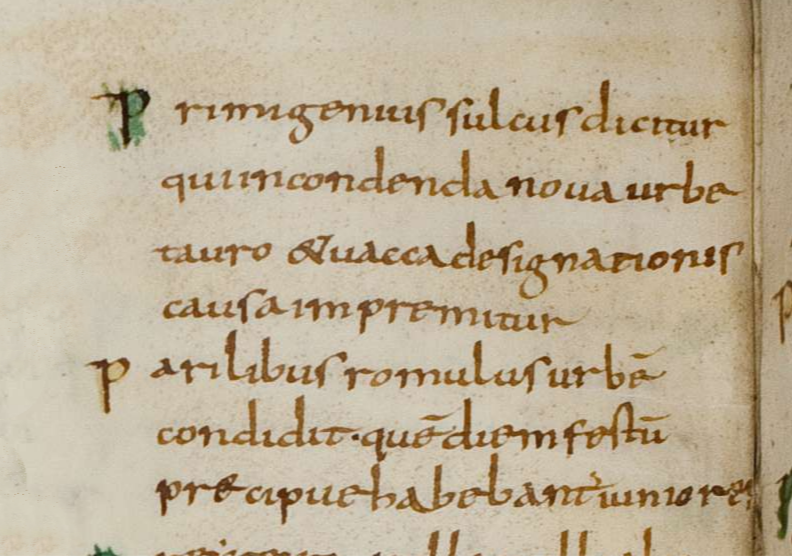A Rare Tyche
- sulla80

- Jan 11, 2024
- 3 min read
Updated: Jul 4, 2024
When you are looking at a coin from "Heraklea" or "Heraclea" or "Heraclia", you have to start by considering "which location". "Heraklea" was a common name for cities in the ancient Greek world. The Wikipedia (as of Dec-2023) lists an island in the Aegean sea, seven ancient cities in Asia and 15 in Europe. Additionally, the name "Heraklea" may also refer to to festivals, battles, a poem, and even a genus of moths.
The name derived from the Greek demigod, Herakles (Roman Hercules). Alcmene the wife of Amphitryon, King of Thebes ,was seduced by Zeus while Amphitryon was busily engaged in battle. Alkemene subsequently gave birth to twins, Herakles son of Zeus and Iphicles son of Amphitryon.
Today's AE coin is from Heraclea Salbace.
Twelve Labors
Herakles, cursed with madness by the goddess Hera, tragically killed his wife, the daughter of Creon, the king of Thebes, along with their children. To atone for these actions, he sought guidance from Pythia, the Oracle of Delphi. She advised him to serve his cousin, King Eurystheus of Mycenae, for twelve years. It was during this time that Eurystheus assigned Herakles the famous 12 Labors.

Where is Herclea Salbace?
This Heraclea in Caria is easily confused with another town named Heraclea ad Latmos just a little further west on the southwestern side of Latmos Mountain and the northeastern coast of Bafa Lake. The remains of the Heraclea in Caria are in the borders of modern Vakıf Village, Tavas district of Denizli province in Turkieye.
Little remains beyond ruins of a stadium and city walls of the ancient town, once located on the Phrygia-Caria Border in the southern foothills of Mt. Babadağ (Mount Salbacos) overlooking the Tavas Plain.
The Coin
This coin from Heraclea Salbace has an interesting portrait of Tyche .
The reverse features a naked Hermes, Mercury to the Romans, who could move freely between divine, underworld, and mortal world. The kerykeion (Greek) or caduceus (Latin) is the recognizable winged staff with two snakes associated with Hermes. Hermes was an aid to Herakles in the 12th labor when Herakles traveled to the underworld to bring back the 3-headed dog Cerberus.
This coin is rarely seen for sale - I found only two in ACSearch, both sold in the last 10 years, both sold by CNG: one sold in 2023, the other in 2012. All, including this coin, seem to be the same dies, reinforcing that were not minted in large quantities. One of these CNG coins is also the coin shown on Asia Minor Coins.

Caria, Heraclea Salbace, pseudo-autonomous issue, circa late 2nd - early 3rd century AD, Æ (23.4mm, 3.14g, 6h).
Obv: HPAKΛIA, turreted bust of Tyche left, holding aphlaston and cornucopia
Rev: HPAKΛЄΩTΩN, Hermes standing left, cloak on left arm, holding a purse and caduceus.
Ref: SNG von Aulock 2542. MANTIS 1944.100.47985. Asia Minor Coins 8821.
This coin is considered "pseudo-autonomous" because it is a local coinage, struck by a city or province, under Roman rule but without an imperial portrait or other reference to the Roman emperor. Here's another pseudo-autonomous coin from Caria. Attuda was about 50km north/northwest of Heraclea Salbace.
The modern village of Hisarköy is located on top of the ruins of Attuda.

Caria, Attuda, pseudo-autonomous issue. AE (2.50g, 17mm), 240-268 AD.
Obv: [Δ]HMOC, laureate head of Demos, r.
Rev: ATTOYΔEΩN, garlanded altar (to Mên Karou) surmounted by two slender vases (or columnar altars) between three pine cones between them.
Ref: BMC 17; Walcher 2755; Martin 12b; SNG München 186-7, Türkoğlu Civic Coinage of Attouda in Caria B35A.6
On the obverse of this coin the People’s Assembly or Demos is personified as a youthful male head. Attouda also had a Boule or City Council.
Mên Karou or Carus, the moon god, is mentioned in Strabo (XII 8.20). Strabo mentions a temple that was "highly venerated" between Loadicea ad Lycos and Carura. The temple would have been not far from Attuda given the remains of all three towns are in Denizli province in Turkiye. Mên wears Phrygian headgear in his depictions on coins and a crescent on his shoulders. Pinecones are an attribute of Mên Karou and on this coin a large altar is depicted with two small altars on top with three pinecones.
For more on pseudo-autonomous coinage see: Votive Deposit in Field 49.
References:
Wikipedia Entry for Mt. Babadağ https://en.wikipedia.org/wiki/Babada%C4%9F,_Denizli
Landscape and History in the Lykos Valley: Laodikeia and Hierapolis in Phrygia, edited by Celal ŞİMŞEK Francesco D’ANDRIA, Cambridge Scholars Publishing
David Magie, Roman Rule in Asia Minor has only three passing references to Heraklea Salbake.
Türkoğlu, İ. (2020). Civic Coinage of Attouda in Caria. Anatolian Research, 0(23), 289-346.









Comments